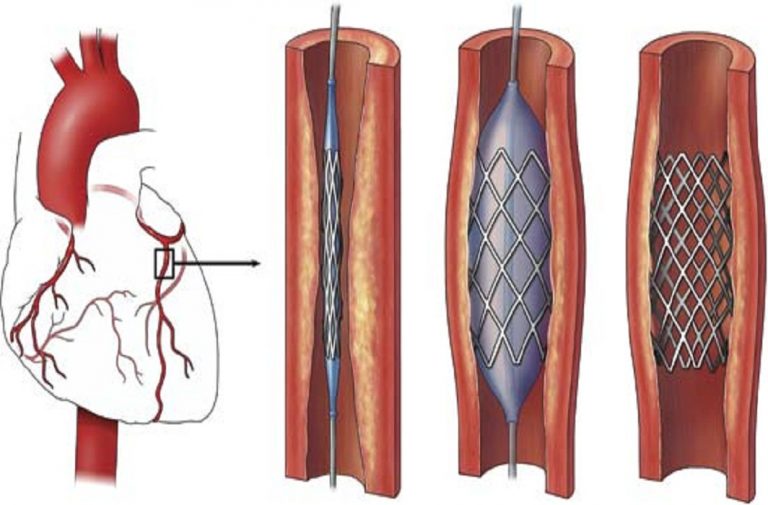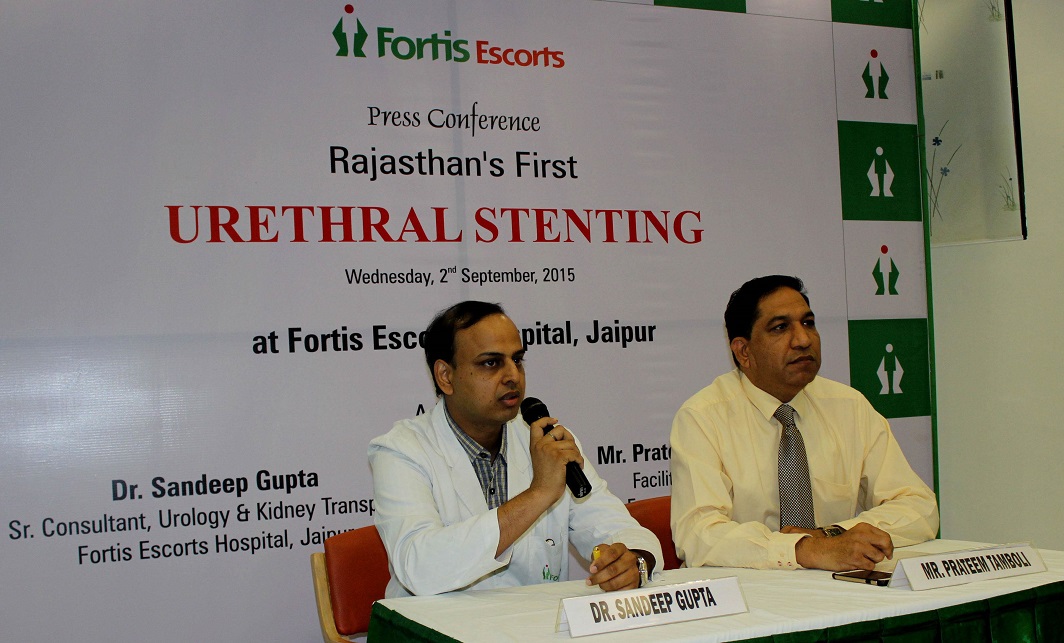
Doc-corporate nexus behind gratuitous use, move late, but necessary one
By Sujit Bhar
Somewhere within the complex medical system of high tech, biology and care, flourishes the corporate world. Once this existed—quite like in education—as a shadow on the periphery of social service, needing to justify its somewhat unwanted proximity. It proudly bubbled up to the surface with privatisation of the medical trade in this country and has stayed swimmingly healthy.
On December 22, with the government including two basic and most frequently used categories of stents in the National List of Essential Medicines (NLEM), the issue of indiscriminate prescription of stents by doctors and a distinct doctor-corporate nexus has come to light.
As stents slowly flooded the biggest market of all, the US, the effects of corporate misgovernance and greed took lawmakers by surprise. India has finally realised the length, breadth and depth of this “business” and the recent and welcome move by the government should bring down the prices of these two categories of stents. This will benefit a wide cross-section of patients.
The stents added to NLEM 2015 by the health ministry through a notification were drug-eluting stents (DES) and bare metal stents (BMS). The government’s notification, which takes effect immediately, came after the recommendations of a sub-committee of expert cardiologists that examined whether coronary stents should be included in the NLEM.
The pricing issue will be settled by the National Pharmaceutical Pricing Authority, which will decide on this after due diligence before notifying the new prices.
Why is this price control so important? Primarily, it is because of the huge number of coronary diseases reported in the country that need urgent surgery and opening up of clogged arteries that would otherwise lead to fatality. The sub-committee of expert cardiologists has concluded that coronary artery disease has become a public health problem in India, resulting in an “enormous need” for procedures.

The most popular way of doing this is by inserting stents that push open semi-clogged arteries.
Nobody doubts how essential it is to use stents, and studies have revealed that this procedure has reduced fatal cardiac arrests in developed countries by over 40 percent. But this very reason has been misused by drug majors to promote their stents across the globe.
BIG MARKET
Stents have been around for around 20 years, but this gained popularity within the medical community in India some time later. Once it was a novelty in India and a procedure that only the rich could afford. With the advent and proliferation of medical insurance, stent manufacturers (which were only multinationals at that time) realised the huge potential in this barely health conscious, massive middle class of India.
Why price control on stents so important? Primarily, it is because of the huge number of coronary diseases reported in the country that need urgent surgery and opening up of clogged arteries that would otherwise lead to fatality. The sub-committee of expert cardiologists has concluded that coronary artery disease has become a public health problem in India, resulting in an “enormous need” for procedures.
The business of stents began in right earnest.
The procedures are expensive on two counts. The stents being used are prohibitively expensive, sometimes 300 percent of their landed price if imported. Secondly, the angioplasty procedure itself is an expensive affair at hospitals. While the angioplasty cost has yet to be handled, the ministry has decided to tackle the stent price.
Basically a stent is used for various purposes inside the human body. It is a small, narrow tube that is inserted surgically into a hollow space in the body to hold the structure open. The hollow may be an artery or blood vessel or a tube that carries urine (ureter). The most common use for a stent is in coronary procedures, to prevent a heart collapse.
They are made of stainless steel and are used to treat the following blockages:
- Coronary heart disease (angioplasty – heart)
- Peripheral artery disease (angioplasty – peripheral arteries)
- Renal artery stenosis
- Abdominal aortic aneurysm (aortic aneurysm repair – endovascular)
- Carotid artery disease (carotid artery surgery)
Drug-eluting stents have the stainless steel mesh covered with drugs that prevent the arteries from clogging up again.
Stent use in the country has been growing exponentially, and according to the National Interventional Council (NIC) nearly five lakh stents were used in 2015 (of which 4.2 lakh angioplasties involved drug-eluting stents), the volume having grown three times over the last five years.
Drug-eluting stents are the most common, being used in over 85 percent of cases. Their prices vary from Rs 23,625 to Rs 1,50,000 in private hospitals, say reports. If you are having this done in a government hospital, the upper limit comes down to Rs 60,000. One can also study the percentage of cost in a total implant procedure: In private hospitals, the price of coronary stents is 25-40 percent of total procedural cost. This goes up to 70-90 percent in government hospitals, the sub-committee has reported.
While the uneven demand supply situation is addressed, the price control is welcome. But it does not look into two aspects: first, why is the number rising so fast? And, secondly, what is the reason why stents are so expensive in the first place?
Sixty percent of stents sold in India are manufactured by multinational corporations. Of the 40 percent built in India, the most (30 percent of the total) come from Surat-based companies that have been able to incorporate laser technology that is used in the area’s huge diamond industry in drilling the narrow tunnels through the stainless steel wires.
While stents manufactured by the Surat-based Indian companies are cheaper, they probably have yet to reach the technical perfection of their multinational rivals. They have also to get the confidence of the doctors and their patients. This will take time and a lot of publicity.
This was evident in the reactions available to the public on the decision of the government.
The Confederation of Indian Industry (CII) took a pro-business stance, with Himanshu Baid, Chairman, CII Medical Technology Division having reportedly commented that the price cap would adversely affect FDI. That looks like a long shot.
The Indian stent market is worth USD 400 million (over Rs 2,600 crore) and growing. AiMeD forum coordinator Rajiv Nath points out in a report that import costs add to the procedure cost. Indigenous stents (the bare metal ones) cost between Rs 10,000 and Rs 15,000. A direct purchase would get the hospital a discount of 25 per cent. Drug-eluting stents (to prevent re-stenosis, or thickening of the artery wall) cost between Rs 25,000 and 40,000.
Echoing Baid’s sentiments, Advanced Medical Technology Association (AdvaMed) had reportedly commented: “(The move) is detrimental to the nascent medical device industry committed to improve access to quality healthcare and medical devices in India. The quality of products and clinical outcomes do not seem to have been given a priority.” Incidentally, AdvaMed is the lobby group for global medical device manufacturers such as Abbott and Medtronic.
Contrast this with the comment by the Association of Indian Medical Device Industry (AiMeD), a lobby group for Indian stent manufacturers. They welcomed the move and said this would give more opportunities to domestic companies who can then pitch their products with the price advantage.
The Indian stent market is worth USD 400 million (over Rs 2,600 crore) and growing. AiMeD forum coordinator Rajiv Nath points out in a report that import costs add to the procedure cost. Indigenous stents (the bare metal ones) cost between Rs 10,000 and Rs 15,000. A direct purchase would get the hospital a discount of 25 per cent. Drug-eluting stents (to prevent re-stenosis, or thickening of the artery wall) cost between Rs 25,000 and 40,000.
SHOCKING REVEAL
Meanwhile, there is this issue of unnecessary stent implants, which has dogged the medical world abroad as well as in India.
In 2013 a Bloomberg article highlighted the risks attached to unnecessary stenting in the US, within a system that “rewards doctors based on volume of procedures rather than quality of care.” The arithmetic shown was simple: “Cardiologists get paid less than $250 to talk to patients about stents’ risks and alternative measures, and an average of four times that fee for putting in a stent.”
The reports stated that five hospitals were taken to court and had to settle “with the Justice Department over allegations that they paid illegal kickbacks to doctors for patient referrals to their cath labs. St. Joseph Medical Center in Towson, Maryland, paid the government $22 million without admitting liability”.
In India, a September 2014 report states that a Maharashtra Food and Drug Administration (FDA) investigation had exposed the huge price difference (300 percent) between import and sale price that was the seed of a bribing scandal. The interesting part was that the multinational, Medtronic USA, made aware of local distributor’s hand in this, had immediately distanced itself from the issue.
The report said that the money made through this price differential “was used to bribe doctors to persuade them to use their company’s devices”.
Here is where the government’s intervention would come in handy, benefiting patients.
Lead: An illustration showing use of stents in the heart. Photo: Britannica

